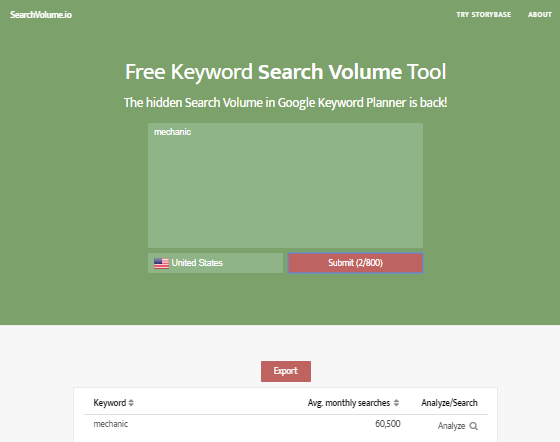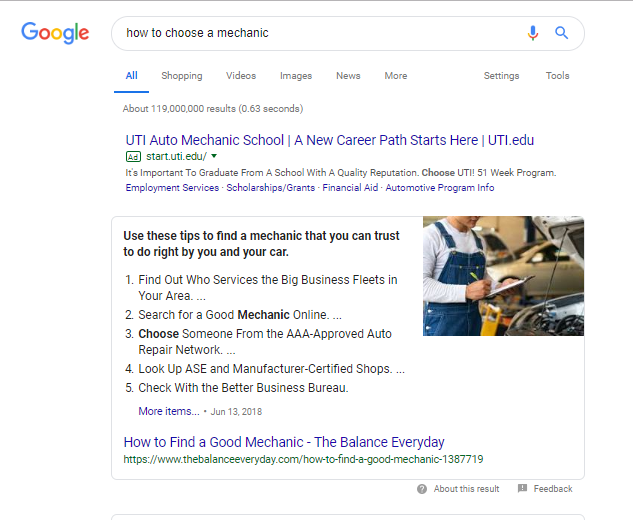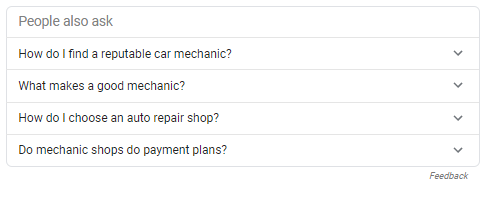Creating SEO-friendly content can be tricky. Many organizations have great writers that just aren’t familiar enough with SEO to write optimized copy. While other organizations spend hours editing outsourced content because the writers are not as fluent in the niche of the organization. I meet with clients regularly who say one of two things. 1) they are writing or paying someone to write blog content that isn’t seeing results, or 2) they have no idea where to begin. Whether you are writing in-house or outsourcing copy, follow these steps to help you create relevant, optimized content that readers will love.
1. Research your Audience
The first step should always be to know who you are writing for. Who is your audience? You may have segments of your market, each with a distinct problems and search queries. You should know who you are selling to better than your competitors. Asking clients the questions below will help you create a persona for your customers.
Conduct Interviews with clients to answer the following questions:
- What do they like/dislike?
- What are their hobbies?
- How do they use your product?
- What are their frustrations?
- How do they talk/sound?
Once you have identified your audience segments, use your research to tailor your content. Is there a phrase or verbiage that is repeated across your customers? Use it in your content. Write content about their life. Each segment will have its own cluster of content that drives site traffic.
2. Choose a Blog Topic
Selecting the right topics for your content takes time, effort and a knowledge of who you’re writing for. This can be harder for some organizations compared to others. Some industries can post a blog once a week, some only once a month. When choosing a blog topic it should be:
- Relevant to your organization. Any content on your blog should be related to your organization or the industry in some way. Remember your blog serves to draw customers to your services through your website.
- Worth your time. Not every topic you can write about is worth your time, from an organic search point of view. Search volume for the keyword may be limited or you just can’t add value that makes your content unique to the user.
- Consider the levels of the buying process. Developing content for users at top, mid, and bottom of the funnel is important for your content strategy. For a mechanic, upper funnel may have a blog on tire maintenance, mid level funnel a blog on when to see a mechanic, bottom of the funnel could be how to select a mechanic.
- Use Winnable Keyword Titles. We have a tendency to make titles catchy, and that is great! But if the post isn’t titled with keywords that are relevant to a search query, they aren’t going to be found.
- Checking Search volume around certain keywords can be helpful in choosing the right title. Use google suggestions by clicking your cursor before and after your keyword to get a sense of the context for searches.
- Look at the “people also ask” portion of a google page for inspiration. Some can lead you to other avenues of the same topic that you might be more likely to win. Answer the Public is also a great resource for discovering what users are searching for around your keyword.

3. Keyword Research
Keyword research is the most important aspect of your content strategy. These are the words that you want to win to bring relevant customers to your site.
- Find your Primary Keywords. For example, shoe is a broad keyword for a shoe store. But related primary keywords might also be running shoes, dancing shoes, basketball shoes.
- Test your Keywords. Search your keyword. What type of content is ranking, is it relevant to your content goals or do you need to further dial in your keyword?
- Utilizing Tools. Semrush and Moz are great tools for keyword research. They will analyze your keywords, give you additional keyword ideas, and also allow you to dive into competitor analysis. It is important to understand your competitors and what they’re ranking for. There are also tools like Keyword.io that help you do basic keyword research for free.
Learn more branded vs. non branded keywords.
4. Correctly Format your Content
Write content that you would want to read! Think about how you read blogs. Do you read every word? Even if you do, most of the users on your site will not. Consider these formatting tips.
- People don’t read, they skim. Break up walls of text with headers, bullets, and shorter sentences that outline the important information. It helps your readers and search engine crawlers get a better understanding of your content.
- Use Images. Images provide a rest for the eye and an opportunity to highlight your organization. Make sure to post images with alt tags so that crawlers are able to understand the image has value. Keyword tagged images also can help you win traffic from image searches. If your image appears in a search, Google may also display it in an answer box.
- Avoid thin content. Generally, 1500 to 2000 words is considered the sweet spot to be considered authoritative information. If you’re only going to write a couple hundred words there is little likelihood of ranking. However, if content is repetitive and filled with fluff, 1500 words might as well be 20.

All of these are important when considering the way google pulls together information for a query. This format is great for crawlers to not only assess your content, but rank it appropriately. Ranking content with steps, bullets, or numbered lists are more likely to be used for answer boxes than a wall of text.
5. Increase Blog Authority
Google looks at not only the content, but the author, and overall site for a determination on credible information to share with its users. When you write your content, remember to use E.A.T.
- Expertise. Who is saying it? Google looks at who is writing the content, particularly for topics on finance, health, and other more serious topics known as YMYL (Your Money, Your Life). The person writing your content should have credibility in the topic area. For example, an article by the Surgeon General on the effects of tobacco will rank higher than a similar post written by a camp counselor.
- Authoritative. How are they saying it? The content needs to be long enough to be considered authoritative content, usually about 1500 to 2000 words. It should display a depth of research on the topic.
- Trustworthiness. Why should I believe them? Is the overall site credible, is the domain secure and safe, and does the site display trust towards or receive promotion from untrustworthy sites?
6. Refresh Outdated Content
You may have content that has done really well in the past, but lately traffic has dipped, or you may have content that just needs some of the mentioned tips to give it a second chance. Sometimes the best strategy for your content isn’t writing, but rewriting. Start by identifying why traffic dropped or look for those posts that need a little reworking.

For dropped traffic Google algorithm changes may have lowered your position, or your content is just out of date, or the result page has some new features like Answer Boxes and PAA (People Also Ask) that are stealing your clicks. Updating titles and copy to better reflect the new content goal is a good practice, because all of the traffic and backlink equity that post may have created remain on your site. If your content can not be saved, use a 301 redirect to point it into similar (yet better), more relevant content.
Basic SEO Content Tips
- Get to the Point Quickly. Crawlers are looking for the best answer and highest user value in the shortest amount of time. Your anecdote about summer camp may be a great lead in for your post, but if it is the third paragraph and you’ve still not gotten to the point, your user won’t stick around.
- CTA. Tell the user what they should do next with that information. Book an appointment, reserve a date, sign up for emails, etc. Depending on where content falls on your sales funnel you’ll want a relevant call to action.
- Use Anchor Text. Your users should be able to flow through your site naturally. Text linked to product or other relevant resources/content increases a user’s time on your site. This also makes your site easier to crawl and better passes equity between pages.
- Use Keywords Organically. Use keywords in your copy organically. It should not feel like the words are being added in, but they are a natural part of the sentence.
- Tags. Tags can be a great way to organize your content into collections of related content. This is beneficial for users and search engine crawlers. Be careful not to create too many tags to avoid empty tags or large amounts with just one post.
Learning how to create content for SEO can take a while, but it is a skill set worth developing. Whether you develop content in house or use a content service, understanding content SEO is crucial to a post success. If your content is not optimized for SEO, you are missing opportunities for increased traffic and sales. Use these tips to get the most out of your content!

